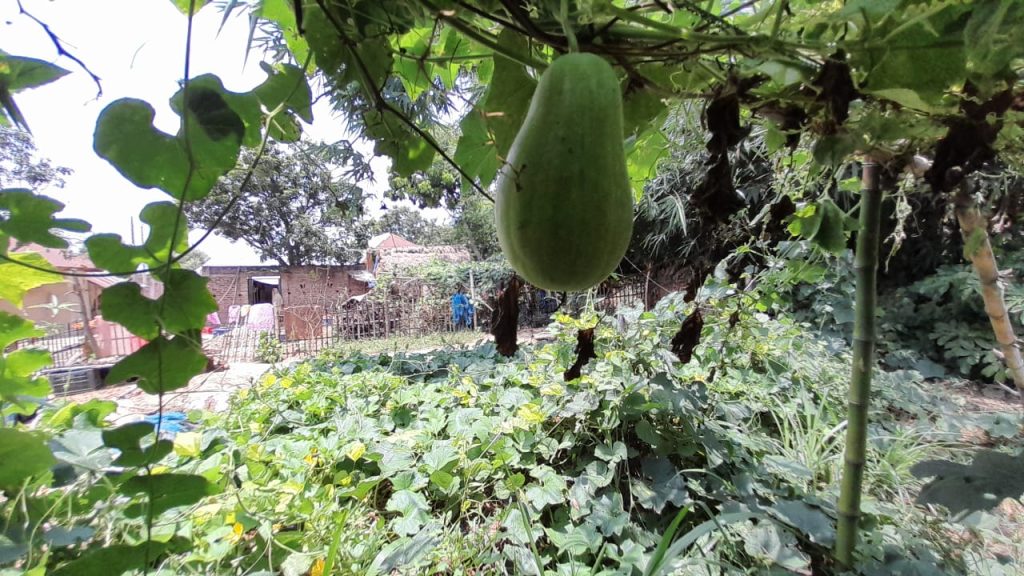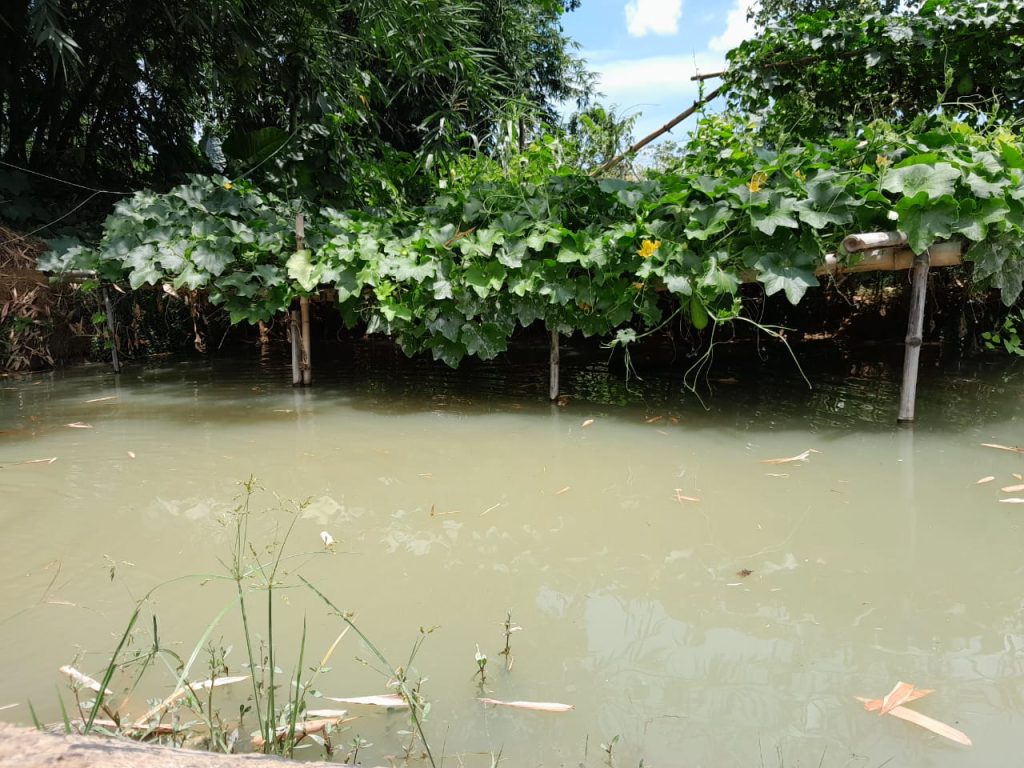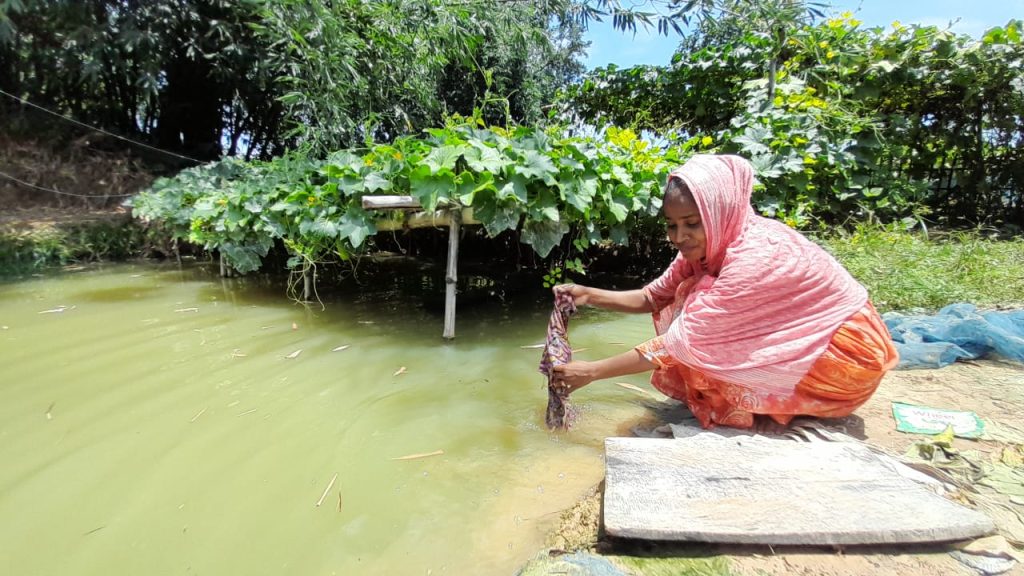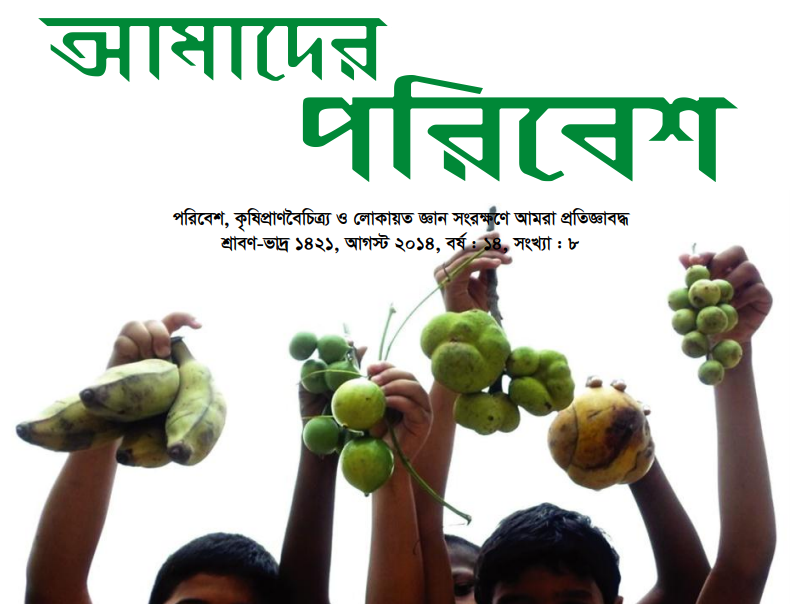Md. Shahidul Islam from Rajshahi
Introduction
Water scarcity is one of the most pressing problems in drought prone region Rajshahi today. Water scarcity was not immense in the past times and there was green shape everywhere. Md. Sharif Mia (65), a resident of Azhair village in Nachol Upazila of Chapainawabganj, said, “In the past, the sun also was hot, we couldn’t go out in the afternoon and there was water problem as well and but it was not so acute as today. Earlier there was a source of water, now there is no water anywhere. There is no water under the ground, there is no water on the ground, and there is no water from the sky (rainfall has decreased).’ According to Sharif Mia, earlier there was plenty of water in natural reservoirs, canals and ponds and people used to get water all year round. But now there is no water anywhere. Women are the most sufferers due to water scarcity as they have to collect water from a long distance. Thus, they sometimes use their knowledge on how they could address the water problems. Sonia Khatun (30), a woman from Barind region has taken such an effective step to solve her family’s water problem by applying her indigenous knowledge. In doing so Sonia does neither spend a lot of money not consults any technical experts. She does all this through her own initiative using her indigenous knowledge. She has taken a sustainable environment friendly initiative by digging a small pond which is locally called Gaira to solve her water related problems. She uses the Gaira system to store surface rainwater and use it throughout the year.

Sonia Begum’s water problem
Sonia Khatun (30), a resident of Kasba Unien Azhair village in Chapainawabganj studied up to class 10. She has five members in her family where her husband is farmers growing fruits. She has also some amount of cultivable lands where they grow paddy. But the shortage of water puts her family to trouble as they could not make use of their lands. The surrounding ponds and reservoirs are leased and the water cannot be used due to commercial fish farming or the owners do not allow the water to be used. Hand tube-wells no longer hold water as they used to, so they have become useless and abandoned. Without looking at the alternative, she bought a small motor with great difficulty to collect water. The water is drawn from a depth of about three hundred feet. But sometimes when there is no electricity the irony starts. She said, ‘When the electricity goes out it becomes difficult to collect water through the motor. When there is any disaster, about two or three or more hours have to be spent without electricity. If there is no electricity, water cannot be drawn from that small deep tube-well for the family’s use.” According to her, water shortage is experienced due to drying up of the natural reservoirs and leasing out the ponds for commercial purposes. She went on saying, “During the times of no electricity, the water crisis is so dire that we have to collect water from a distance of two to three kilometers.” Besides, due to scarcity of water they are facing problems to rear livestock and produce crop in their homestead. Thus, she thinks how she could solve the water related problems.
Sonia found a solution to the water problem
Due to the water problem, Sonia has to face more hardships when she is unable to collect water from far away with her small child in her arms. Once she thought that water can be saved by a small tank on two Katha of land next to the house. She saw in his paternal grandfather’s house that they collected all the water for the family from a small gaira (small hole or pond) near the house. Ten to fifteen feet deep, rainwater was stored there, water from which was used throughout the year. With this thought, Sonia Begum consulted her husband and they both dug a small pond in an abandoned area near their house. It was rainy season at that time. Last year (2022) she took her husband along with her to dig a reservoir to conserve water during monsoons. Then rain water started filling there. She uses that water for all her family’s work. From this small water reservoir, the water problem of her family has been solved. She doesn’t have to worry about water all year round. With the water, she cultivates vegetables and fruits near the house. It has become a major source of income for her family. She grows local fruits and vegetables with BARCIK’s help. However, with the help of BARCIK’s official Raihan Kabir Ranju, she learned how to grow vegetables in carat. She also learned how to make organic fertilizers and pesticides from different plants like neem. Sonia is always against the use of chemicals and pesticides. She learned about the dangers of chemical fertilizers and pesticides through various discussions of the Ajhair Women’s Development Organization, which was formed in their village with facilitation support from BARCIK. She produces safe vegetables and food for her family. In addition she also gifts and sells those vegetables to the neighbors.
25 families in the village benefit from small water reservoir
About 15000 people from 25 families of the village use water from the reservoir which was developed by Sonia during water crisis. This reservoir is the source of water not only for people but also for the livestock of these families in times of crisis. During water scarcity, when there is no water around, the birds and wild animals also come here to drink water. Marginalized families of the village take water from this reservoir during the water crisis and use it for the vegetable plants in the backyard, including bathing, cleaning clothes. Halima Begum (48) of the same village thus said, ‘When there is no water or drought our only hope for water is Sonia’s reservoir.’

Native fish farming in Gaira
The water of Gaira is not only used, but Sonia Begum fulfills the demand of fish for her family by cultivating local fish in the water of this Gaira (Reservoir). Sonia Begum said, “Local fishes such Tengra, Puti have been released in the reservoir. In this case, her plan is to preserve some more native breeds in this Gaira. She wants to save the fishes that are almost extinct or less available. However, the reservoir is not only home to fish but also frogs.
Sonia’s strategy to prevent water wastage in Gaira
Sonia makes some strategic changes to preserve the water of the reservoir. She cultivates vegetable using daises so that the water from the Gaira does not dry up in the sun and evaporates less. She has placed a vegetable garden (lofting garen) on a part of the gaira. There are always all kinds of seasonal vine vegetables in the vegetable garden. She cultivates seasonal vegetables such as gourd, pumpkin, beans etc. As a result, the Gaira is covered and less water evaporates due to the sun. She said that as a result of this, the water in Gaira is cold and can be used always. Over again she makes the bank of the gaira slanted so that after use the water can roll back into the gaira. For example, when washing clothes, the water on the clothes rolls back into the Gaira. If one takes a bath on the bank of the Gaira, the water goes back to the Gaira. As a result, water can be used again.

Conclusion
Life and water together are our biodiversity. Water is essential for life. The water crisis in the drought-prone Barind region is increasing day by day. On the one hand, due to the regional impact and negative effects of climate change, the temperature of the region is increasing day by day. Besides, rainfall has decreased compared to earlier due to environmental damage including killing of large trees. The sources of natural reservoirs are getting destroyed day by day as well. Canals, ponds, lakes and rivers have dried up. While due to excessive extraction of underground water, the water table has gone more downward intensifying the scarcity of water to some extent. The marginal and indigenous communities of the Barind track are the most affected. Sonia Begum, with her own initiative has solved the water problems by preserving rain water through digging a Gaira (Like pond) using local knowledge and also help her neighbors. Similarly, if the people of other villages also take such initiative it would have been better way to address water crisis in the region. On the other hand, if the government takes step to stop the lease of the natural water sources in the region and ensures the access of the marginalized people to them, and if the canals and natural reservoirs are renovated people could have met their water needs from surface water sources as well.
Translated by Silvanus Lamin

